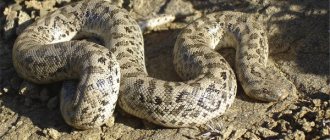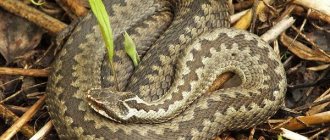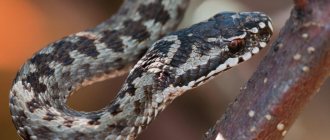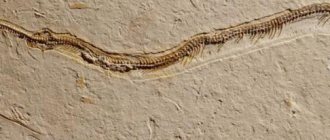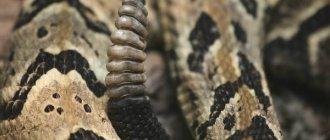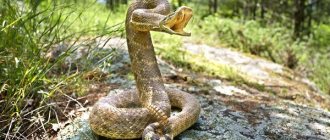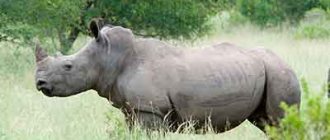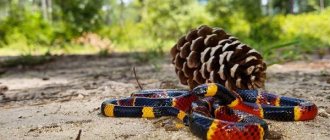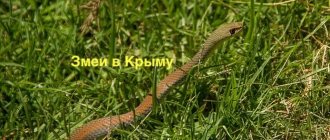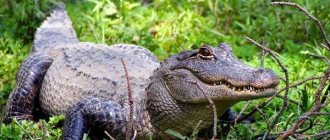More than 2,500 species of snakes live on our planet. They can be found everywhere except Antarctica and a few islands, such as New Zealand and Ireland, and they are also not found on the small islands of the Atlantic and Pacific (its central part) oceans. However, among all the snake diversity, only 10% are poisonous.
flickr/drjskatre
Poisonous snakes use venom for hunting to kill their prey, but they can also bite for defense purposes, but before attacking they most often try to warn the enemy about this. Snakes swallow their prey whole, without chewing it, and so that the victim does not resist and does not complicate the swallowing process, the snake stings it, injecting its poison. By the way, a snake’s defensive bite contains significantly less toxic substance than a bite during a hunt.
Taipans
Taipans (lat. Oxyuranus) are very poisonous Australian snakes from the family of asps, which include only two species: the fierce snake (lat. Oxyuranus microlepidotus) and the taipan (lat. Oxyuranus scutellatus). These are quite large snakes. Their bite is considered very dangerous, even the most dangerous among all modern snakes living on Earth. Until the antidote was discovered (in 1955), people died from the bite of these snakes in 90% of cases.
flickr/markusOulehla
The cruel (fierce) snake (lat. Oxyuranus microlepidotus) can reach up to 1.9 m in length. It can be found in the dry lowland fields of Central Australia, where it preys on small mammals and frogs. The venom of a cruel snake may well be enough to kill 100 adults. For comparison, its venom is approximately 180 times stronger than that of a cobra.
flickr/tropidechis2
Taipan or coastal taipan (lat. Oxyuranus scutellatus) - this large (3-3.5 m in length) representative of adders differs from its predecessor in its bad temper and is considered one of the most aggressive snakes. The taipan is especially dangerous during periods of skin change and reproduction. Found in northeastern Australia and New Guinea. To the delight of the local population, the taipan rarely approaches their homes, but despite this, every year someone suffers from its bites.
Natural enemies
Some birds of prey and mammals act as natural enemies. Larger snakes are also among the common viper's predators. Cannibalism is not unusual for snakes, given the fact that the common viper itself eats the young of other species of snakes. Here are the main predators that pose a serious threat to this species.
Predator birds:
- Buzzard.
- Black kite.
- Spotted Eagle.
- Snake eater.
- Owl.
- Gray Heron.
- White stork.
Mammals:
- Ferret.
- Ermine.
- Badger.
- Red fox.
If a reptile is attacked, it hides under stones or hides in dense vegetation. If she is cornered, she will respond with a hiss and rush at the enemy, biting him and injecting her poison (not always).
Black Mamba
The black mamba (lat. Dendroaspis polylepis) is the most poisonous snake of the African continent. It can be found in savannas and woodlands of Angola, Uganda, Zambia, South Africa, Botswana, Kenya, Zimbabwe, etc. In addition, this snake has a very bad reputation. It is considered the fastest (speeds up to 20 km/h) and aggressive snake in Africa.
flickr/guenterleitenbauer
Its length can be about 2.4–3 m, and some specimens grow up to 4.5 m in length. It received this name because of its black mouth, which terrifies anyone who meets on its way. Having bitten once, the mamba tends to bite several more times. Being the owner of such speed, the mamba often chases its prey rather than sitting in ambush. In one bite, the mamba injects up to 400 mg of poison. The lethal dose for an adult is about 10-15 mg. Its poison causes paralysis and death.
Reproduction
Russell's viper is an ovoviviparous snake. Mating begins at the beginning of the year, pregnancy occurs within 6 months. In one litter there are 20 cubs, in rare cases their number can reach up to 60.
Most snakes emerge from the egg shell already in the mother's body, but a small part sheds it only after birth.
Chained viper in captivity. Posted by Andy Maddox
Cubs born in the membrane often die; they do not have time to get out of the shell, which quickly hardens due to the dry environment.
The first molt occurs a couple of minutes after hatching from the egg, and on the second day the snakes begin to eat. Sexual maturity is reached at 2-3 years.
Tiger snake
flickr/Brendan Schembri
The tiger snake (lat. Notechis scutatus) is another representative of the adders and a resident of Australia. Although it is a small (up to 2 m) snake, it is very poisonous. Small animals bitten by it die instantly. The danger lies in the fact that it is found almost throughout Australia and is one of the most numerous snakes inhabiting this continent.
Spectacled snake or Indian cobra
flickr/uzyfied
The spectacled snake, or Indian cobra (lat. Naja naja) is a very beautiful motley snake that grows up to 1.5-2 meters in length. Lives in India, Central Asia, Southern China (to the Philippines and the islands of the Malay Archipelago). The offspring of this cobra are poisonous from the very first minutes after birth. The venom of the spectacled cobra contains toxins that cause damage to the central nervous system. Just one gram of poison can kill 140 medium-sized dogs.
Habitat of the chained viper
Daboya is distributed throughout India and Pakistan, and is found in Southern China and all countries of the Indochinese Peninsula.
Some vipers have been found on the islands of Ceylon, Taiwan, East Java, Komodo and Flores.
Marsh viper in the wild. Author: Instagram – hiss.diaries
The habitat is areas with dry soil and bushes growing on cultivated land. Rocks or mammal burrows serve as shelter.
Can crawl into villages to prey on rodents. In mountainous areas, Daboya rises to a height of more than 2 m above sea level.
Malay krait
flickr/Thomas Calame
The Malayan krait (lat. Bungarus candidus) is a very dangerous snake from the adder family. Extremely unfriendly. It lives in Australia, South Asia and the islands of the Malay Archipelago. Its poison is fatal and primarily affects the human brain. Death can occur quickly and even without paralytic symptoms.
Sandy efa
flickr/Jagadeesh SJ
The sand ephas (lat. Echis carinatus) is a poisonous snake from the viper family. This small snake (50-60 cm in length) lives in clay and loess deserts, near river cliffs and in bush thickets of Turkmenistan, Uzbekistan and Tajikistan, as well as Africa, Algeria, Palestine, Persia, Arabia and in the western part of the Hindustan Peninsula . When meeting a person, it makes a characteristic rustling sound, produced by the friction of jagged rings. If a person survives after being bitten by such a snake, it is likely that he may remain crippled.
Harlequin adder
flickr/Jake M. Scott
The harlequin or eastern adder (lat. Micrurus fulvius) is a poisonous snake that lives in northeastern Mexico and the southeastern part of the United States. The owner of a bright color with characteristic red, black and narrow yellow rings. The bite of this snake is very dangerous to human life. If help is not provided in time, a person can die within 20-24 hours.
Description of the species
The chained viper is also referred to as the Russell's viper or Daboia russelii, sometimes called the swamp viper.
It is one of the most common venomous snakes in South Asia, and in India it is included in the list of “big four venomous snakes that most often bite people.”
The photo shows a chained viper. Author: Instagram – wesavesnakes
The longest length of the Daboya viper is about 165 cm, its standard size is no more than 120 cm, 5 cm of which is on the head.
It is flattened and triangular in shape. The muzzle is blunt, rounded, slightly raised. The chain viper is distinguished by impressive nostrils, in the middle of which there are nasal scales.
On the top of the head there are small keeled scales. The eyes are large and have yellow spots.
On the upper jaw there are from 2 to 6 pairs of fangs, the length of which does not exceed 16 mm. The first pair of fangs is active, the rest are used for replacement.
The body is thick, round and semicircular sections are observed. The dorsal area is covered with keeled scales. The tail is short - does not exceed 14% of the total length.
Photo of a chained viper. Posted by Andy Maddox
The chained viper has a color pattern on its back. Along the ridge and on the sides of the body there are three rows of oval-rhombic spots of red-brown color.
Around them there are wide black and narrow white stripes. Some spots merge with each other, thereby forming a chain.
There is a white arrow-shaped line on the top of the head, and two dark spots on the sides.
There are no more than 30 dorsal spots; they continue to grow throughout the life of the viper. The lateral spots on the back move away from each other as the snake matures.
African boomslang
flickr/Magnus Forsberg Uppsala
The African boomslang (lat. Dispholidus typus) is a highly poisonous snake that lives in South and South-West Africa. Its poison is toxic: when it enters the bloodstream, it destroys the cells of the body. The venom of the African boomslang is 2 times more dangerous than the venom of the Indian cobra and viper. He is a very aggressive snake, so you should not approach him or make sudden movements - he will attack without hesitation.
Common viper
flickr/aspisatra
The common viper (lat. Vipera berus) is a poisonous snake from the genus of true vipers. Lives in Eurasia. Its bite is very painful, but rarely leads to death. Hemorrhagic swelling and necrosis occurs at the site of the bite. Signs of poisoning: dizziness, lethargy, headache, nausea, shortness of breath. In especially severe cases, degenerative changes in the kidneys and liver may occur.
How is it different from a viper?
Very often, vipers are confused with other snakes, for example, with a completely harmless snake, which is not surprising, because both snakes are very similar, they have a similar color, and live in the same places. And yet there are a number of differences between them, which we will write about further:
- Despite the similar color, the appearance of these snakes has one significant difference - the grass snake has two yellow or orange spots on its head, while the viper does not have them.
- There is also a difference in the spots on the scales: in snakes the spots are in a checkerboard pattern, while in vipers there is a zigzag stripe on the back that runs along the entire body.
- The eyes of a snake and a viper are different; the viper has a vertical pupil, while the snake has a round pupil.
- Perhaps the most important difference is the presence of poisonous fangs in the viper, which are simply absent in the snake.
- Usually it is longer than a viper, although a large viper may be caught that will be longer than a small snake.
- The snake's tail is longer and thinner, while the viper's tail is short and thick.

